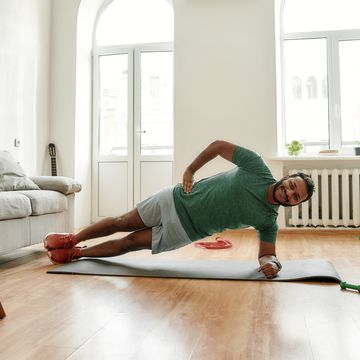The running world has a bias toward effort. We tend to focus on the volume and intensity of our training and the effect that these things have on our cardiovascular fitness. But, while cardiovascular fitness is clearly important, it’s not the only piece of the performance puzzle. Gait and technique – although considered when we first start running and buy Heres why its okay to be a heel striker – is another key component of performance that runners often overlook during their training cycles.
Here’s why it’s important to analyse your running gait – and how you can do so easily at home.
What is a gait analysis?
While we tend to develop our own running styles, our technique can affect running economy and put a limit on how fast we may eventually be able to run. Poor technique can increase the likelihood of injury, which, in turn, can affect the consistency of your training and hamper your potential to progress. By analysing your running technique, you can try to identify some of the key potential risk factors and address these by doing regular Check for minimal rotation through the torso and running drills.
Running technique is dynamic and complex, with lots of moving parts. That complexity can lead to sweeping judgements about ‘good’ or ‘poor’ form based on how pleasant a runner’s movement is to the eye. The technique and gait you should be interested in, though, is the one that is effective – in terms of both performance and injury prevention. So, don’t try to force your body into a generic, perfect-looking technique. Instead, assess yourself as an individual, think about your injury history, and consider where you feel stronger or weaker in runs or races, or areas that feel less comfortable than they should.
How to do a gait analysis
Go to a lab
One way to analyse your gait is to engage the services of a performance lab. Biomechanics labs use sophisticated software to introduce a high level of detail and measurement to your gait analysis, which gives you key data and expert opinion. However, this approach can be expensive and, obviously, requires you to travel to a lab.
Look at your shoes
Thankfully, there are a range of DIY assessments you can do as well. Looking at the wear pattern on the soles of your shoes can be a useful first exercise, as it indicates areas of significant impact and highlights differences between your left and right side.
Record yourself running
While looking at your shoes is helpful, undertaking some basic video analysis can be a more beneficial way of reflecting on how your body actually moves. Here’s how to do it:
Set up your camera
- Place a camera, smartphone or tablet in landscape mode on a tripod. Or, failing that, get a friend to hold it
Get the right recording settings
- Record in the highest resolution your device allows and at normal speed, not slow motion – you can slow it manually later
Think about your background
- A clean background can make detail easier to see in the video
Choose the right surface
- A good starting point is a flat, firm surface outside. While indoor treadmills are often used for gait analysis due to their practicality, it’s better if you can record outdoors
Plan the process
- Set up your camera so you can record your whole body side-on, and fill five to eight seconds of footage. Record footage from this angle at a variety of paces before doing the same from directly behind (running away from the camera) and directly in front (running toward the camera)
- Studies have shown that runners’ techniques change as they fatigue over a longer or harder run or race. As such, consider capturing video when you’re tired at the end of a long run or faster session
- In addition to the video footage, capture your cadence (or steps per minute) using your running watch, or ask someone to help count your steps as you run
Pick your methodology
- There’s no single correct way to analyse running form. I tend to watch videos at full speed several times at various paces to try to see if anything stands out. Then, I watch frame by frame to break down the various stages of the running gait, looking at individual components as opposed to trying to see everything at once. I take screenshots at key points and use annotation tools to help me better identify joint angles, posture and foot strike
Key phases of the running gait
Broadly speaking, you’ll see that some runners tend toward a more gliding type of gait, with lower knee lift and less up-and-down movement. Meanwhile, other runners tend toward a higher impact, more bouncy action as they run. While neither gait is right or wrong, they provide a useful context to the detail below.
Early swing phase
What is it?
The early swing phase refers to the moments after your foot pushes off from the ground.
What should I look out for?
- Thigh return: Check that your thigh is ‘pulled’ through quickly by the hip flexors after push-off and doesn’t lag behind the hips
- Heel return: Look for a heel that’s pulled up quickly toward the buttocks
- Trunk movement: Check for minimal rotation through the torso
- Posture and chest: Look for a ‘tall’ position, where your hips and chest are extended and shoulders in line with your hips
Late swing phase
What is it?
The late swing phase refers to the moments before your foot hits the ground.
What should I look out for?
- Foot position: In addition to the video footage, capture your
- Foot return angle: Your foot should return down and back toward the ground, and not reach out in front of your body
- Bean-shaped stride: Combined, the early and late swing phase of your running gait should almost have the shape of a kidney bean
Ground contact
What is it?
Ground contact refers to the moment when your foot lands on the ground.
What should I look out for?
- Strike point: Pay attention to the part of your foot that contacts the ground first. Is it the heel, midfoot or forefoot? Is your foot dorsiflexed at the ankle (toes pointing up) or plantar flexed (toes down)?
- Shank angle: This is the angle between your foot strike and knee position. Ideally, your foot should land under your knee to create a neutral shank angle
- Active contact: As your foot strikes the ground, is it a passive contact or is there some tension? Active foot contact is where your tendons react to pop you into your next stride
Stance phase
What is it?
The stance phases refers to the moment when your foot is fully in contact with the ground.
What should I look out for?
- Ground contact time: Notice the amount of time that you spend on your foot. Do you quickly transition through your stance phase into your next stride?
- Lean: Look for no more than a small forward lean from the ankle
- Pelvic position: Your pelvis position should appear neutral from a side view. Imagine your hips are a bucket of water – would the water be level or sloshing out? From the rear view, your hips should be as level as possible
- Hip extension: Check for minimal rotation through the torso?
Action to take after your gait analysis
So, you’ve completed your gait analysis and identified the quirks and inefficiencies in your running style. What’s next? It’s time to turn those observations into improvements.
Strengthen weak points
Start by zeroing in on any weaknesses that emerged during your analysis. Did you notice excessive hip drop, for example? Following a bike workouts to support your running training A clean background can make detail easier to see in the video running economy.
Improve flexibility
While strength is important, flexibility is equally so when it comes to addressing gait issues. Incorporate dynamic stretching and foam rolling, particularly focusing on the calves, hamstrings, and quads, to keep your muscles are supple and responsive.
Do some drills
Running drills are your new best friend. Incorporate high knees, butt kicks and bounding exercises to reinforce proper mechanics and engrain efficient movement patterns. These drills improve coordination, neuromuscular control and stride efficiency.
Consult the pros
Lastly, consider periodic check-ins with a running coach, especially if pain persists or you're not seeing improvements. A coach can provide personalised feedback and adjust your training accordingly.

















